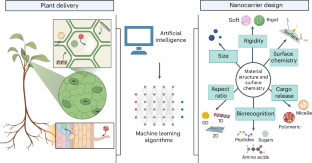2024-07-23 パシフィック・ノースウェスト国立研究所(PNNL)
<関連情報>
- https://www.pnnl.gov/publications/understanding-forces-regulate-crystallization-particle-attachment
- https://pubs.acs.org/doi/abs/10.1021/acsnano.4c01797
酸化亜鉛ナノ粒子の非DLVO力と配向付着に及ぼす溶媒組成の影響 Effect of Solvent Composition on Non-DLVO Forces and Oriented Attachment of Zinc Oxide Nanoparticles
Lili Liu,Sakshi Yadav Schmid,Zhaojie Feng,Dongsheng Li,Timothy C. Droubay,Peter J. Pauzauskie,Gregory K. Schenter,James J. De Yoreo,Jaehun Chun,Elias Nakouzi
ACS Nano Published: June 18, 2024
DOI:https://doi.org/10.1021/acsnano.4c01797
Abstract

Oriented attachment (OA) occurs when nanoparticles in solution align their crystallographic axes prior to colliding and subsequently fuse into single crystals. Traditional colloidal theories such as DLVO provide a framework for evaluating OA but fail to capture key particle interactions due to the atomistic details of both the crystal structure and the interfacial solution structure. Using zinc oxide as a model system, we investigated the effect of the solvent on short-ranged and long-ranged particle interactions and the resulting OA mechanism. In situ TEM imaging showed that ZnO nanocrystals in toluene undergo long-range attraction comparable to 1kT at separations of 10 nm and 3kT near particle contact. These observations were rationalized by considering non-DLVO interactions, namely, dipole–dipole forces and torques between the polar ZnO nanocrystals. Langevin dynamics simulations showed stronger interactions in toluene compared to methanol solvents, consistent with the experimental results. Concurrently, we performed atomic force microscopy measurements using ZnO-coated probes for the short-ranged interaction. Our data are relevant to another type of non-DLVO interaction, namely, the repulsive solvation force. Specifically, the solvation force was stronger in water compared to ethanol and methanol, due to the stronger hydrogen bonding and denser packing of water molecules at the interface. Our results highlight the importance of non-DLVO forces in a general framework for understanding and predicting particle aggregation and attachment.



